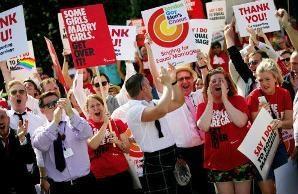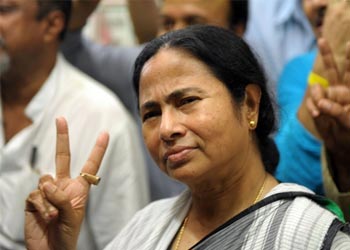April 23, 2013
NEW DELHI: Stating that the economic slowdown has bottomed out, Prime Minister's economic advisory panel has pegged the growth rate for the current fiscal at 6.4 per cent, up from 5 per cent in 2012-13.

April 23, 2013
NEW DELHI: Stating that the economic slowdown has bottomed out, Prime Minister's economic advisory panel has pegged the growth rate for the current fiscal at 6.4 per cent, up from 5 per cent in 2012-13.

Industry and services sectors growth rates have been projected at 4.9 per cent and 7.7 per cent (against 3.1 per cent and 6.6 per cent) respectively.
Releasing the Economic review, PM's economic advisory council (PMEAC) chairman C Rangarajan said the economy can achieve growth rate of 7.5-8 per cent over the short term on more policy and administrative actions besides speedy execution of projects.
"I believe we have reached the bottom, the economy will now continue to grow at a faster rate," Rangarajan said adding the performance of agriculture and manufacture is likely to improve.
The economic growth rate during 2012-13 declined to decade's low of 5 per cent, which the PMEAC hoped could be revised slightly upwards when the final figures are released. The PMEAC had projected a growth rate of 6.7 per cent for the previous fiscal in August last year.
Rangarajan emphasized that government needed to contain current account deficit (CAD), make financial instruments more attractive and accord speedy clearances to projects to achieve higher growth.
"The very high level of investment rate that we have even now gives us the hope that if we take action for speedy implementation of projects, we can achieve the higher rate of growth quickly even in the short term," Rangarajan said.
Talking about downside risks to inflation, he said "There are more administrative prices which needs to be corrected".
Last fiscal, the government took a number of reform measures including partial deregulation of the sugar sector, partial deregulation of diesel prices and capping of subsidized LPG cylinder for domestic usage.
The PMEAC projected inflation for the fiscal at 6 per cent and CAD to come down to 4.7 per cent of GDP, from 5.1 per cent in 2012-13.
The agriculture sector is likely to grow at 3.5 per cent, higher than estimated 1.8 per cent in the previous fiscal, helped by a normal monsoon, the PMEAC report said.
Industry and services sectors growth rates have been projected at 4.9 per cent and 7.7 per cent (against 3.1 per cent and 6.6 per cent) respectively.
Rangarajan said the impact of the government's actions since September last year in the form of liberalizing FDI norms and speedy project clearances would be visible in the current fiscal and hence growth could be better.
Government has set up a Cabinet committee on investment (CCI), under Prime Minister Manmohan Singh, to accord fast track clearances to large projects. The panel yesterday cleared several mega projects in the oil and power sector.
Terming CAD as main concern, Rangarajan said to tackle it capital flows should be encouraged and financial instruments be made more attractive to win away people from gold.
The CAD, which is the difference between inflow and outflow of foreign exchange, shot up to an historic high of 6.7 per cent of the GDP in the December quarter on high gold and oil import.
He said gold import in value terms in the current fiscal is expected to be USD 45 billion, while oil import bill is set to rise to USD 125 billion, from USD 110 billion last year.
While net FDI inflow in the current fiscal is expected to be USD 24 billion, FII inflow is likely at USD 18 billion during the period, he said, adding capital flows should be adequate to finance CAD.
The PMEAC report projected inflation in food, fuel and manufacturing category at 8 per cent, 11 per cent and 4 per cent, respectively, for the current fiscal.
Asked on the possibility of a rate cut by the RBI as March WPI inflation eased to lower than expected 5.96 per cent, Rangarajan said, "non-food manufacturing inflation remains around the comfort zone. As inflation comes down, it will create more space for monetary policy to support growth".
Courtesy: PTI
















































































































